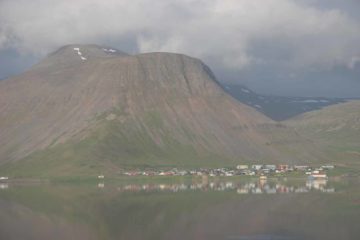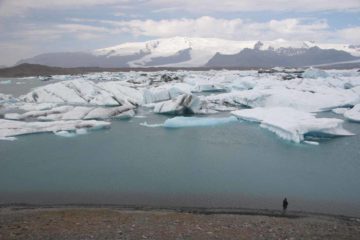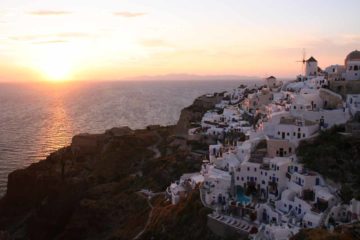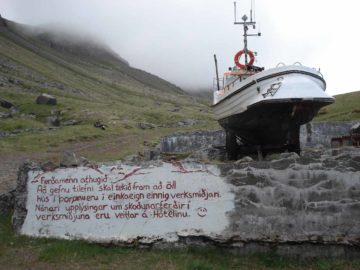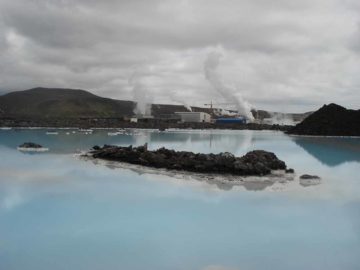About Dynjandi
Dynjandi (I believe is pronounced “DIN-yahn-dih”; also known as Fjallfoss or “Mountain Falls”) was definitely our favorite waterfall in the remote Westfjords (Vestfirðir) for it was by far the most spectacular one in the region. Befitting of its name was that the word “dynjandi” meant “thunderous” in Icelandic (my dictionary said “dynja” was a verb meaning “to boom” or “to resound”). It was actually a series of waterfalls (7 in all) with a cumulative height of 100m. The main uppermost tier was the one that we photographed the most (as shown above) since it was most notable with its trapezoidal shape (said to be 30m wide at the top, 60m wide at the bottom).
We noticed that each of the seven sections of the waterfall had a signposted name corresponding to it. The subtiers (not counting the main tier) were called Bæjarfoss, Hundafoss, Hrísvaðsfoss, Göngumannafoss, Strompgljúfrafoss, and Hæstajallafoss, respectively. While each of the falls were interesting, we thought it was the cumulative effect of all the falls coming down together in series that really made the collective Dynjandi stand out.
Driving to this falls was an exercise in long distances where even a ferry ride to the Westfjords region reduced the driving distances to something a little more manageable for a trip on limited time. Even most of the roads in the region were unpaved 2wd roads. Yet contrasting the remote theme of the Westfjords, when we arrived at the falls, we were surprised to see how tourist friendly the facilities were (i.e. well-established walkways, toilets, large car parks, signage, etc.). Plus, it was not unusual to see tour buses stopping here as well. As a result, this waterfall was surprisingly bustling despite its pretty remote location.
As for the walk up to the falls itself, it climbed immediately uphill through a combination of slopes and stairs. Some sections of the paths were pretty steep and rocky, but by and large the path was very doable by anyone with a reasonable amount of fitness. Perhaps it was more of a cardiovascular workout since the path went relentlessly uphill until it reached its end at the base of the main waterfall. But breaking up the exercise were signsposts next to each of the waterfall’s subtiers (which was how I was able to identify them by name) so that got us to mentally and physically take breathers before continuing on.
Julie and I took about 45 minutes or so going uphill to get all the way to the base of the main waterfall. It took us a total of around 90 minutes to cover the round trip distance plus all the time we stopped to take photos and admire the falls each step of the way. Going back downhill was a breeze, but it was definitely worth taking our time on the descent because the views of the Arnarfjöður and surrounding terrain were breathtaking.
Related Top 10 Lists
Trip Planning Resources
Nearby Accommodations
This content is for members only. See Membership Options.Featured Images and Nearby Attractions
This content is for members only. See Membership Options.Visitor Comments:
Got something you'd like to share or say to keep the conversation going? Feel free to leave a comment below...No users have replied to the content on this page
Visitor Reviews of this Waterfall:
If you have a waterfall story or write-up that you'd like to share, feel free to click the button below and fill out the form...No users have submitted a write-up/review of this waterfall

